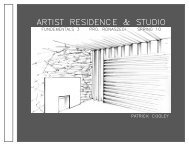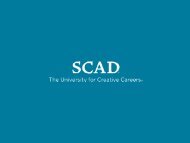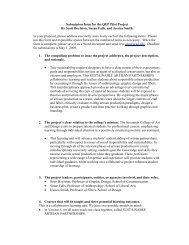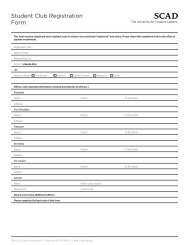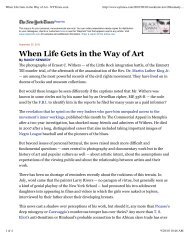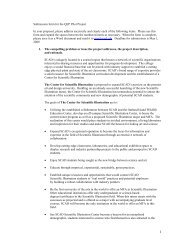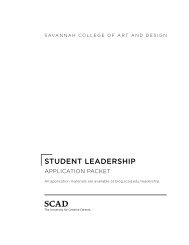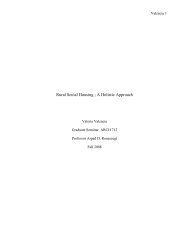Nicole Roberts MFA Thesis Visual Component Artwork - Savannah ...
Nicole Roberts MFA Thesis Visual Component Artwork - Savannah ...
Nicole Roberts MFA Thesis Visual Component Artwork - Savannah ...
You also want an ePaper? Increase the reach of your titles
YUMPU automatically turns print PDFs into web optimized ePapers that Google loves.
EXPECTATION 2 | craft & technique<br />
As a Project Designer, Liz Teston of asd in<br />
Atlanta observes, “Recent graduates often have<br />
tremendous computer skills that give the perception<br />
that they can also hand sketch, but actually many<br />
cannot.” This is a skill typically emphasized during<br />
first year foundation programs, but according to<br />
multiple professional testimonies, students are not<br />
retaining this knowledge. The deficiency of new<br />
graduates’ handcraft in the professional workplace<br />
is attributed not only to their exclusive dependency<br />
upon the computer, but also to the diminishing role<br />
of foundation studies and its inconsistent quality.<br />
Early design education should avoid the constructs<br />
of computer labs, only using them sparingly as an<br />
introduction to software for future use. An inadequate<br />
foundation curriculum yields students whose craft<br />
and technique are subordinate to that of the computer.<br />
These are the students who rush to commemorate the<br />
first idea that pops into their head by making it digital,<br />
versus taking half of the time to brainstorm numerous<br />
concepts with quick thumbnails by hand on paper.<br />
“This generally inhibits the development of ideas,<br />
because psychologically you tend to restrict yourself<br />
to what you are capable of achieving technically.” 10<br />
Research shows that students are not practicing<br />
their handcraft and technique by their own disposition.<br />
The solution is reminiscent of elementary math class<br />
when teachers admonished the old “show your work”<br />
adage to adolescents calculating their long division<br />
problems. There is validation in showing the process.<br />
For graphic design coursework, process books must<br />
be a non-negotiable expectation for each project from<br />
conception to completion. Ideally, process books<br />
are considered as a portion of the student’s grade<br />
at midterm and the end of the course. As educators<br />
emphasize and expect continual documentation of<br />
preliminary sketches, students will infuse the practice<br />
of handcraft into their permanent repertoire for<br />
the professional workplace. We are past the Milton<br />
Glaser heyday when he proclaimed, “Computers are<br />
to design as microwaves are to cooking.” 11 But despite<br />
these technological advances, it will always remain<br />
critical for design students to develop the skill of<br />
hand sketching concepts on paper. The opportunities<br />
for pedagogical change seem cut and dry to leading<br />
professionals like Mike Sloan, Partner at Lippincott<br />
in New York, “Schools need to pay more attention to<br />
hand sketching skills, not just computer skills.”<br />
You don’t have to give<br />
up your pencil when you<br />
switch to computer design.<br />
The Mac’s just another pencil!<br />
April Greiman<br />
16



